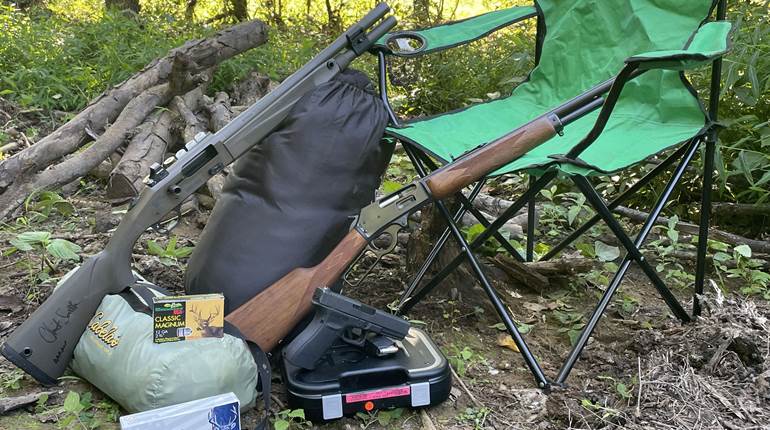
Early in-line muzzleloader projectiles were typically of all-lead construction or were simply jacketed handgun bullets. Most companies have recently transitioned to manufacturing high-performance bullets with relatively high ballistic coefficients and that reliably upset at muzzleloader velocities. Increased performance comes at a higher retail cost, however, and even then, are these upgrades always necessary for deer-size game?
Many hunters could be equally effective with handgun bullets teamed with sabots purchased separately. This both saves money and allows for selection of the bullet best suited for the game hunted.
For example, on Cabela’s website, 50 of Hornady’s excellent 0.452-inch, 300-grain XTP MAG bullets cost $18, which, when combined with the MMP Sabots, equates to approximately 56 cents per shot. This can be as much as several times lower cost than prepackaged, muzzleloader-specific projectiles.
Most valuable to me, though, is acquiring the optimal projectile and fine-tuning for enhanced accuracy. If maximum penetration is desired, a handgun bullet with a bonded-core, partition/cross-member, or is non-expanding, is best. Examples include the Swift A-Frame, Nosler Partition HG or Barnes Buster. If less penetration is desired, try a .40-cal. projectile with a .50-cal. x .40 sabot. Hornady XTP and XTP Mag, Nosler Sporting Handgun Revolver, Sierra Sports Master and Speer DeepCurl bullets, to name a few, work well for most hunting.
For practice, bulk packages of inexpensive projectiles such as Berry’s Preferred Plated Bullets are ideal. A variety of adequate sabots are offered in a range of configurations from .45x.35 to .58x.45, especially those from Precision Rifle.
Manufacturers’ websites, handloading manuals and company representatives provide guidance on projectiles’ optimum functioning velocities.
You too might come to the conclusion I did some time ago—handgun bullets still have a place in muzzleloader hunting.





































